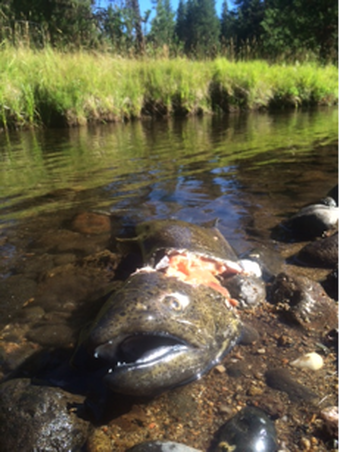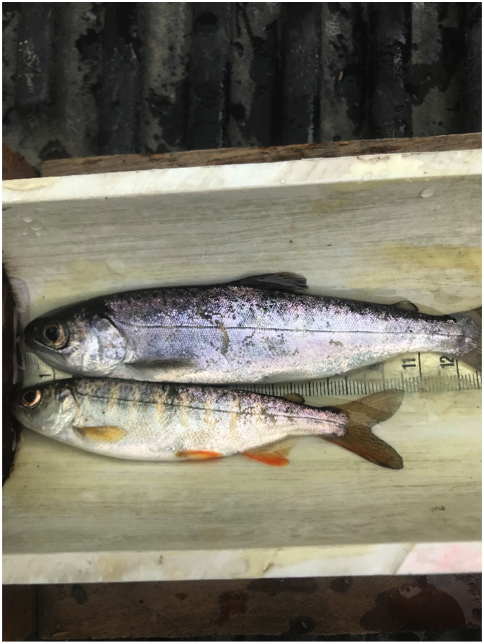|
by Matthew Kaylor (CRTFC) and Evan Booher (ODFW) Once the warm temperatures and low flow conditions of summer arrive, juvenile Chinook Salmon hunker down and move little until flows increase in the fall. However, we know little about movement in spring because fish are too small to mark with PIT tags and challenging to capture as high flows make sampling inefficient. It is important to determine patterns of fish movement during this early-life period because it sets the stage for where juveniles spend the critical summer period. This information can provide guidance for prioritizing and locating restoration projects to maximize juvenile salmon use. Using genetics as a tracer, MFIMW partners including Oregon State University (OSU), Oregon Department of Fish and Wildlife (ODFW), the Columbia River Inter-Tribal Fish Commission (CRITFC), and the Confederated Tribes of Warm Springs (CTWS) are quantifying movement from redds (salmon nests) to summer rearing habitats in the Middle Fork John Day River (MFJD). In September of 2020, genetic samples were obtained from 111 adult salmon after they spawned, which represented roughly a third of the spawning population. In addition, the location of each fish was recorded. During the summer 2021, the offspring of these adults will be captured from locations throughout the MFJD and fin clips will be collected for genetic analysis. Sampled juveniles can then be matched to previously sampled parents through genetic parentage analysis, which then provides a location of where juveniles originated. The project will occur over an additional year (adults from 2021; juveniles from 2022), with a greater focus on sampling Chinook fry from floodplain habitats to determine dispersal patterns shortly after they emerge from redds. The Chinook Salmon life cycle comes full circle in streams and rivers of the Columbia River basin. The locations at which adult Chinook Salmon spawn and ultimately perish (left) could play an important role in determining habitat use of the next generation of juvenile Chinook Salmon (right).
0 Comments
Leave a Reply. |
IMW News Updates
Archives
September 2022
Categories |


 RSS Feed
RSS Feed
